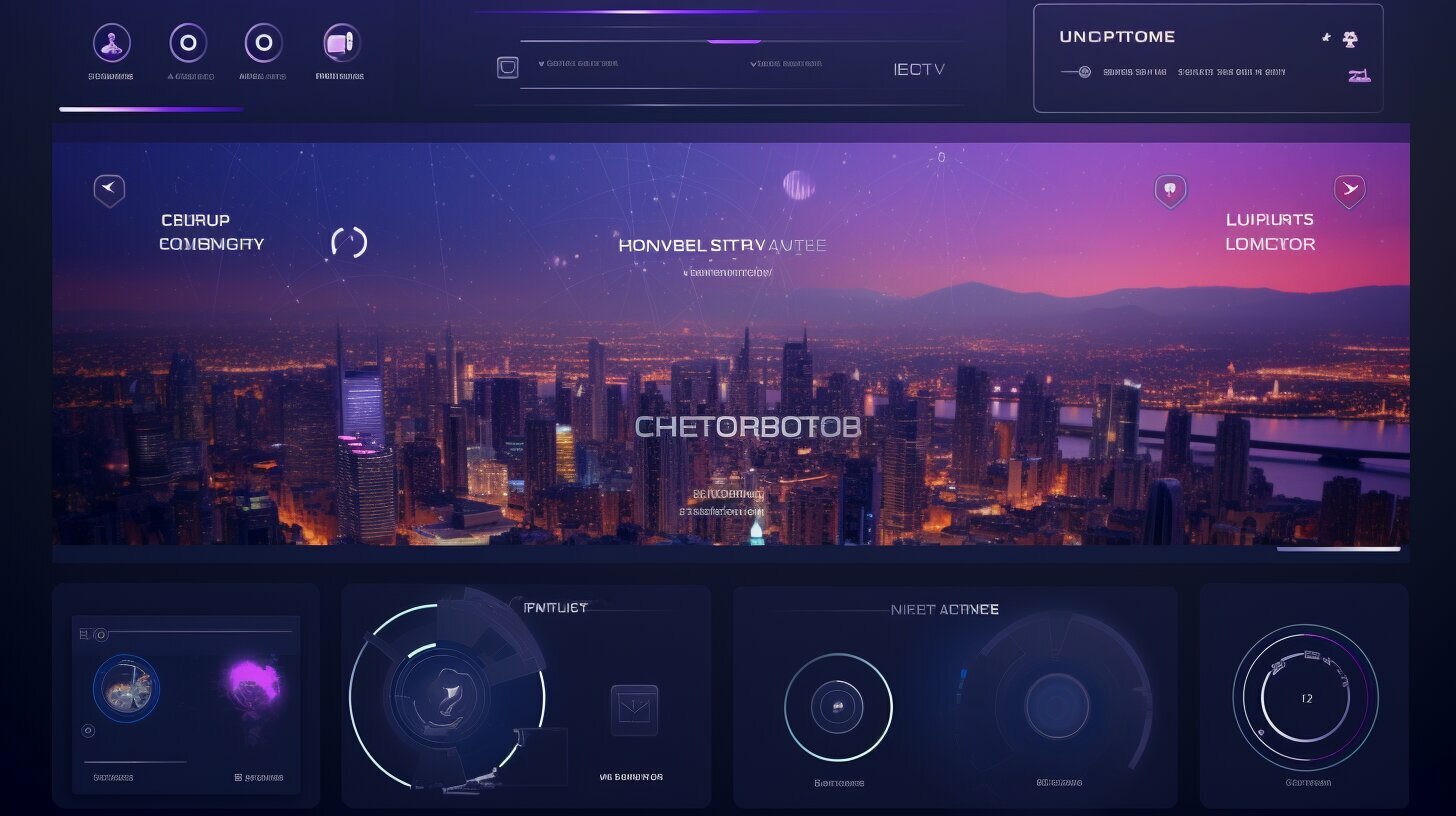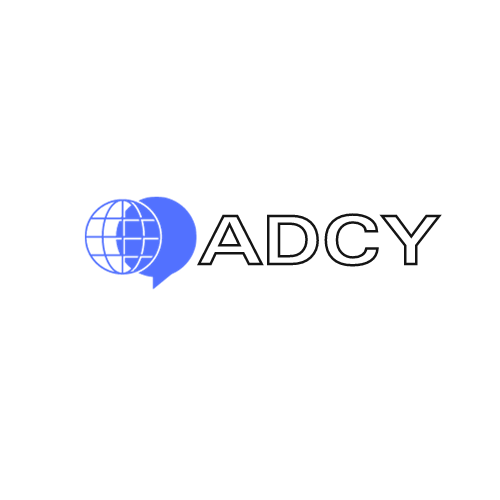In this comprehensive guide, we will walk you through the step-by-step process of developing a social media calendar specifically designed for agencies. A social media content calendar is a strategic plan that outlines upcoming posts for social media accounts, organized by date and time. It is a valuable tool that can be created using various methods such as a digital calendar, spreadsheet, or social media management platform.
Creating and following a social media calendar offers numerous benefits for agencies. It allows for efficient time management, ensuring that posting schedules are consistent and well-organized. By planning and scheduling content in advance, agencies can maintain a steady flow of high-quality posts, leading to improved brand safety and engagement. Furthermore, a social media calendar streamlines cross-functional collaboration, enabling different teams within an agency to align their goals and work together seamlessly.
Developing a social media calendar involves several key steps. It begins with conducting a thorough social media audit to assess the agency’s current online presence and identify areas for improvement. This process helps in setting specific goals and identifying the target audience, which is crucial for effective content planning.
Once the goals and target audience are defined, agencies can then select the most suitable social media channels and content types. It is essential to consider audience preferences and engagement levels when making these choices. Additionally, agencies should organize and plan their social media posts using a social media calendar template, which includes important details such as social media networks, date and time, copy, media, approval steps, and key metrics.
To ensure optimal results, agencies should also define a posting schedule that takes into account the best times to post on each platform. Tracking and analyzing social media metrics is another vital step in measuring the success of posts and making data-driven improvements.
By continuously optimizing and adapting their social media calendar, agencies can achieve long-term success and maintain a strong online presence. Finally, implementing a social media calendar requires effective collaboration and coordination between different teams within the agency.
Key Takeaways:
- A social media content calendar is a strategic plan for upcoming social media posts, organized by date and time.
- Benefits of using a social media calendar include saving time, maintaining a consistent posting schedule, ensuring quality and brand safety, and streamlining cross-functional collaboration.
- The process of developing a social media calendar involves conducting a social media audit, setting goals, identifying the target audience, selecting the right channels and content types, and organizing and planning with a social media calendar template.
- Agencies should define a posting schedule based on optimal times to post on different platforms and track and analyze social media metrics to measure success and make improvements.
- Continuous optimization and collaboration are key to ensuring long-term success with a social media calendar.
Understanding the Importance of a Social Media Calendar
A social media calendar is a vital tool for agencies looking to streamline their content strategy, improve efficiency, and drive engagement on social media platforms. It serves as a structured plan that helps agencies organize and schedule their social media posts effectively. By utilizing a social media calendar, agencies can ensure a consistent posting schedule, maintain quality and brand safety, and optimize their social media efforts.
One of the key benefits of using a social media calendar is the ability to save time. By planning and scheduling posts in advance, agencies can allocate their resources more efficiently. With a clear content plan in place, agencies can dedicate their time to creating high-quality content instead of scrambling to come up with ideas on the spot. This leads to a more consistent and cohesive social media presence, which in turn enhances audience engagement and brand loyalty.
Another advantage of a social media calendar is that it enables agencies to streamline cross-functional collaboration. By centralizing the content planning process, different teams within the agency, such as marketing, creative, and social media, can work together more seamlessly. This ensures that everyone is aligned and working towards the same goals. By having a comprehensive overview of the content schedule, agencies can also avoid any conflicts or overlaps in their social media posts.
| Benefits of a Social Media Calendar |
|---|
| Save time and resources |
| Maintain a consistent posting schedule |
| Ensure quality and brand safety |
| Streamline cross-functional collaboration |
Overall, a social media calendar provides agencies with structure and organization in their content planning process. By utilizing this tool, agencies can optimize their social media strategy, maximize engagement, and achieve their marketing objectives. Whether it’s a digital calendar, a spreadsheet, or a social media management platform, implementing a social media calendar is essential for agencies serious about their social media efforts.
Conducting a Social Media Audit
Before diving into creating a social media calendar, it is essential to conduct a thorough social media audit to understand your agency’s current online presence and identify areas for improvement. This audit will provide valuable insights into your agency’s social media strategy, allowing you to align your calendar with your goals. Here are the key steps to conducting a successful social media audit:
- Review your current social media profiles: Start by evaluating your existing social media profiles. Take note of the platforms you are currently active on, the content you are posting, and the engagement you are receiving. This will help you identify which platforms are performing well and which ones may require more attention.
- Analyze your audience: Dig deep into your analytics to understand your audience demographics, interests, and preferences. This data will help you tailor your content to resonate with your target audience and attract more engagement.
- Assess your competitors: Study your competitors’ social media presence to gain insights into their strategies and identify opportunities for differentiation. Analyze their content, engagement levels, and overall brand positioning.
- Evaluate content performance: Review your past social media posts and identify which ones have garnered the most engagement and achieved your desired objectives. Consider the types of content, messaging, and visuals that have resonated with your audience to inform your future content planning.
Example of a Social Media Audit Template:
| Platform | Followers | Engagement Rate | Top Performing Content |
|---|---|---|---|
| 10,000 | 5% | “10 Must-Have Products for Summer” – Image of our new summer collection | |
| 8,000 | 2% | “5 Tips for a Healthy Lifestyle” – Video of our fitness expert demonstrating exercises | |
| 5,000 | 3% | “Join us for an exclusive webinar on digital marketing trends” – Tweet with registration link |
By conducting a thorough social media audit, you can gain valuable insights into your agency’s current online presence and make data-driven decisions when developing your social media calendar. This analysis will help you identify areas of improvement, optimize your content strategy, and ultimately achieve better results in your social media efforts.
Setting Goals and Identifying Target Audience
Clearly defining your agency’s goals and target audience is crucial for developing a successful social media calendar that aligns with your overall marketing objectives. By establishing specific goals, you can create content that resonates with your target audience and drives meaningful engagement. This step is essential in ensuring that your social media strategy is effective and delivers the desired results.
To begin, identify the objectives you want to achieve through your social media efforts. Whether it’s increasing brand awareness, driving website traffic, generating leads, or boosting sales, having clear goals will guide your content planning and help you measure success.
Once you have defined your goals, it is equally important to identify your target audience. Conduct thorough research to understand who your audience is, what their interests and preferences are, and where they are most active on social media. This will enable you to tailor your content to their needs and create a more targeted approach.
Table 1: Sample Social Media Goals and Target Audience Characteristics
| Goal | Target Audience Characteristics |
|---|---|
| Increase brand awareness | Demographic: Age, gender, location Psychographic: Interests, hobbies, values |
| Drive website traffic | Demographic: Age, gender, location Online behavior: Websites visited, search preferences |
| Generate leads | Demographic: Age, gender, occupation Behavioral: Purchasing habits, engagement with previous campaigns |
| Boost sales | Demographic: Age, gender, income Psychographic: Buying motivations, brand loyalty |
By aligning your social media calendar with your agency’s goals and target audience, you will be able to create content that is relevant, engaging, and drives results. This strategic approach will not only help you achieve your marketing objectives but also strengthen your brand’s presence on social media.
Choosing the Right Social Media Channels and Content Types
With numerous social media platforms available, it’s crucial to choose the channels that align with your agency’s target audience and content goals. Each platform has its own unique features and user demographics, making it essential to select the most appropriate ones to maximize engagement and reach.
To narrow down your choices, consider your target audience’s preferences and behavior. Are they more active on visual platforms like Instagram and Pinterest, or do they prefer informative content on LinkedIn and Twitter? Conducting thorough research and analyzing audience demographics can help you identify the platforms that resonate with your target audience.
Once you’ve determined the ideal social media networks, it’s time to choose the content types that will best showcase your agency’s offerings. Visual content, such as images and videos, often perform well on platforms like Instagram and YouTube, where users expect visually appealing content. On the other hand, platforms like Twitter and LinkedIn may prioritize informative articles or industry updates.
Table 1: Recommended Social Media Channels and Content Types
| Social Media Channel | Recommended Content Types |
|---|---|
| High-quality images, videos, behind-the-scenes content | |
| Engaging posts, videos, links to blog articles | |
| Short and concise updates, links to relevant articles | |
| Professional articles, industry insights, thought leadership content | |
| YouTube | Informative videos, tutorials, product demonstrations |
| Inspirational images, infographics, step-by-step guides |
Remember, the key to successful social media marketing is providing value to your audience while staying true to your brand. Developing a diverse content mix that aligns with your target audience’s interests and platforms of choice will help you build a strong online presence and drive engagement and conversions.
Organizing and Planning with a Social Media Calendar Template
A well-organized social media calendar template is the foundation for efficient content planning and execution, ensuring a consistent and cohesive brand presence across social media platforms. With a clear structure in place, agencies can streamline their social media efforts, save time, and maximize their impact. Here’s how you can effectively organize and plan using a social media calendar template.
1. Choose the Right Template
Start by selecting a social media calendar template that suits your agency’s needs. Whether you opt for a digital calendar, spreadsheet, or social media management platform, ensure that it provides the necessary features for scheduling posts, tracking metrics, and collaborating with team members.
2. Define Key Components
When filling in your social media calendar template, consider the following key components:
- Social media networks: List the platforms you’ll be using, such as Facebook, Instagram, Twitter, etc.
- Date and time: Determine when each post should go live, taking into account optimal posting times for each platform.
- Copy: Write compelling and engaging copy that aligns with your brand’s tone and resonates with your target audience.
- Media: Select visually appealing images, videos, or graphics that complement your copy and spark audience interest.
- Approval steps: Include a workflow for review and approval to ensure that all content meets brand guidelines and quality standards.
- Key metrics: Identify the relevant metrics to track, such as engagement, reach, conversions, or website traffic, to evaluate the success of your social media efforts.
3. Optimize for Audience Engagement
Consider your target audience’s preferences and engagement patterns when planning your social media content. Analyze past performance data and industry trends to identify the content types and social media channels that resonate the most with your audience. By tailoring your content to their interests, you can increase engagement and drive better results.
By utilizing a well-organized social media calendar template, agencies can effectively plan, coordinate, and optimize their social media efforts. This strategic approach not only saves time and ensures consistency but also allows for a targeted and data-driven approach to social media marketing. With a clear plan in place, agencies can confidently execute their social media campaigns and achieve long-term success.
Defining a Posting Schedule
Establishing a posting schedule is vital to ensure your agency’s social media content reaches the target audience at the most opportune times. By strategically planning when and how often to share your content, you can maximize visibility and engagement, ultimately driving better results for your campaigns. Here’s how you can define a posting schedule that works for your agency:
- Know your audience: Understand your target audience’s behavior and preferences to determine the times when they are most active on social media. This will vary depending on the platform and the demographics of your audience. Conduct research and analyze data to identify the peak engagement hours.
- Consider platform algorithms: Different social media platforms have their own algorithms that prioritize certain types of content. Take into account how these algorithms function and optimize your posting schedule accordingly. For example, on platforms like Instagram, where posts are displayed chronologically, you may want to schedule your content during peak hours to increase visibility.
- Consistency is key: Maintaining a consistent posting schedule is crucial for building trust with your audience. It helps establish your brand as a reliable source of content and encourages followers to engage regularly. Choose a frequency that aligns with your agency’s resources and goals, whether it’s posting daily, a few times a week, or even multiple times a day.
In addition to these general guidelines, it’s important to leverage social media analytics to refine your posting schedule over time. Monitor the performance of your posts and track metrics such as reach, engagement, and conversions. This data will provide insights into when your audience is most responsive and help you adjust your posting schedule accordingly. Keep testing, analyzing, and refining to optimize your content strategy and achieve the best possible outcomes.
Example Posting Schedule
| Platform | Posting Days | Optimal Posting Times |
|---|---|---|
| Monday, Wednesday, Friday | 9:00 AM, 1:00 PM, 6:00 PM | |
| Tuesday, Thursday, Saturday | 10:00 AM, 2:00 PM, 7:00 PM | |
| Monday – Sunday | 8:00 AM, 12:00 PM, 5:00 PM |
Remember, this is just an example posting schedule, and the optimal times may vary depending on factors unique to your agency and audience. Continuously analyze your social media data, experiment with different posting times, and adjust your schedule as necessary to achieve the best engagement and reach.
Creating Engaging Copy and Media
Captivating copy and visually appealing media are essential elements of a successful social media calendar that captivate your audience’s attention. When developing a social media content calendar, it is crucial to craft compelling copy that resonates with your target audience and aligns with your brand’s messaging. Whether it’s a witty caption, a thought-provoking question, or a compelling call-to-action, your copy should be tailored to spark engagement and encourage interaction.
Alongside captivating copy, incorporating visually appealing media is equally important. Striking images, eye-catching videos, and appealing graphics can help capture the attention of your audience as they scroll through their social media feeds. Ensure that the media you choose aligns with your brand’s aesthetics and values, enhancing the overall visual appeal of your social media posts.
Don’t be afraid to mix up your content formats. Experiment with different types of media such as infographics, GIFs, and user-generated content to keep your audience engaged and create variety in your social media calendar. Visuals are a powerful tool to convey your brand’s message, evoke emotions, and drive action.
Utilizing Quotes and Testimonials
“Quotes are a great way to add depth and inspiration to your social media content. They can provide value, spark conversations, and resonate with your audience. Incorporate relevant quotes from industry experts, thought leaders, or even satisfied customers to convey the credibility of your brand and inspire your audience.”
Adding testimonials from satisfied customers can also be highly effective in building trust and credibility. Sharing positive feedback, reviews, or success stories can help create social proof and encourage others to engage with your brand. Including quotes and testimonials in your social media calendar can reinforce your brand’s authority and build meaningful connections with your audience.
The Power of Lists and How-to Guides
If you want to provide quick and easily digestible content, consider incorporating lists and how-to guides into your social media calendar. Lists, such as “Top 5 Tips,” “10 Must-Have Tools,” or “7 Steps to Success,” can attract attention and offer valuable information in a concise format.
Similarly, how-to guides can be highly engaging and educational. They provide step-by-step instructions or tutorials on a particular topic, enabling your audience to learn something new or gain valuable insights. How-to guides can be in the form of written content, videos, or even infographics, depending on your target audience’s preferences.
| Benefits of Engaging Copy and Media |
|---|
| Increased audience engagement and interaction |
| Enhanced brand visibility and recognition |
| Improved click-through rates and conversions |
| Establishment of brand credibility and authority |
| Creation of meaningful connections with the audience |
Collaboration and Approval Steps
Collaboration and well-defined approval steps are essential for agencies to maintain brand integrity and ensure consistent messaging across all social media platforms. Effective collaboration allows multiple team members to contribute their expertise and insights, resulting in well-rounded content that resonates with the target audience. To streamline the approval process, agencies should establish a clear workflow that outlines the roles and responsibilities of each team member involved in the social media calendar development.
One way to enhance collaboration is by using a content management system that provides a centralized platform for team members to share ideas, provide feedback, and track progress. This ensures that everyone is on the same page and has access to the most up-to-date information. Additionally, implementing a content review and approval process helps maintain brand consistency and prevents errors or miscommunication.
To facilitate collaboration and approval, agencies can create a table in their social media calendar that includes columns for content creation, review, edits, and final approval. This allows stakeholders to easily track the progress of each post and ensures that all necessary steps are completed before publishing. By implementing a structured approval process, agencies can minimize the risk of errors, maintain a consistent brand voice, and deliver high-quality content to their audience.
| Step | Responsibilities |
|---|---|
| Content Creation | Copywriters and designers create social media posts based on the established calendar. |
| Review | Team members, including marketing managers and brand strategists, review the content for accuracy, tone, and adherence to brand guidelines. |
| Edits | Feedback and edits are provided to content creators for any necessary revisions. |
| Final Approval | Once all edits have been made, a final approval is granted by the designated authority, such as a senior marketing manager or the client. |
By following collaborative and approval steps, agencies can ensure that their social media content aligns with their overall marketing strategy and effectively communicates their brand’s message. This level of collaboration promotes efficiency, consistency, and ultimately improves the success of social media campaigns.
Tracking and Analyzing Social Media Metrics
An effective social media calendar incorporates tracking and analysis of key metrics to evaluate the performance of your agency’s social media efforts. By monitoring and measuring your social media activities, you can gain valuable insights into the effectiveness of your strategies, identify areas for improvement, and make data-driven decisions to optimize your campaigns.
One of the primary metrics to track is engagement, which includes likes, comments, shares, and clicks. This data provides insights into the level of audience interaction with your content and indicates whether it resonates with your target audience. By analyzing engagement metrics, you can identify the types of content that generate the highest levels of engagement and replicate their success in future posts.
Another important metric to consider is reach, which measures the number of unique individuals who have seen your social media posts. This metric helps you understand the size of your audience and the level of exposure your content is receiving. By tracking reach, you can determine the reach of your campaigns and identify opportunities to expand your reach by targeting new audiences or tweaking your content strategy.
| Metric | Definition | Importance |
|---|---|---|
| Engagement | Likes, comments, shares, clicks | Indicates audience interaction and content relevance |
| Reach | Number of unique individuals who have seen your posts | Measures audience size and content exposure |
| Conversion | Number of desired actions taken by users | Assesses the effectiveness of your campaigns in driving specific actions |
| Referral Traffic | Website visits from social media platforms | Measures the impact of social media on website traffic and conversions |
Conversion is another crucial metric to track, as it measures the number of desired actions taken by users, such as signing up for a newsletter, making a purchase, or filling out a form. By monitoring conversions, you can assess the effectiveness of your campaigns in driving specific actions and determine the ROI of your social media efforts.
Additionally, analyzing referral traffic can provide insights into the impact of social media on your website’s traffic and conversions. By monitoring the number of website visits from social media platforms, you can evaluate the performance of your social media campaigns in driving traffic to your website and identify the channels that generate the most valuable referral traffic.
Takeaways:
- Track and analyze engagement metrics to understand audience interaction and content relevance.
- Monitor reach to assess audience size and content exposure.
- Track conversions to evaluate the effectiveness of your campaigns in driving desired actions.
- Analyze referral traffic to measure the impact of social media on website visits and conversions.
Optimizing and Making Improvements
Regular evaluation and optimization of your agency’s social media calendar is crucial to adapt to changing trends and improve overall performance. By analyzing key metrics and audience engagement, you can identify areas for improvement and implement strategies to enhance your social media strategy.
One effective way to optimize your social media calendar is to diversify your content types. Experiment with different formats such as videos, infographics, and user-generated content to keep your audience engaged. Pay attention to the performance of each content type and tailor your future posts accordingly.
In addition, consider conducting A/B testing to gauge the effectiveness of different copy and visuals. By comparing the performance of various elements, you can refine your content and drive higher engagement.
Another crucial aspect of optimization is staying up-to-date with the latest social media trends and algorithm changes. Regularly monitor industry news and analyze competitor strategies to identify emerging trends and adapt your content accordingly. This will help you maintain relevance and stay ahead of the competition.
| Optimization Tips: |
|---|
| Monitor social media metrics and audience engagement |
| Diversify content types and experiment with formats |
| Conduct A/B testing to refine copy and visuals |
| Stay updated with social media trends and algorithm changes |
| Analyze competitor strategies for inspiration |
By consistently evaluating and optimizing your social media calendar, you can ensure that your agency’s social media strategy remains effective and aligned with your goals. Ultimately, this will lead to improved engagement, increased brand awareness, and better overall results.
Streamlining Cross-Functional Collaboration
Cross-functional collaboration is essential for agencies developing a social media calendar, as it helps align different teams and foster collective efforts towards achieving social media goals. By bringing together individuals from various departments, such as marketing, content creation, design, and analytics, agencies can ensure that their social media strategy is comprehensive, cohesive, and effective.
One effective way to facilitate cross-functional collaboration is through regular communication and collaboration meetings. These meetings provide an opportunity for team members to share updates, brainstorm ideas, and address any challenges or roadblocks. By fostering open and transparent communication, agencies can ensure that everyone is on the same page and working towards a common goal.
In addition to regular meetings, agencies can also use collaborative tools and platforms to streamline the process of developing a social media calendar. These tools allow team members to collaborate in real-time, share files and documents, and track progress. By leveraging technology, agencies can enhance efficiency, improve coordination, and ensure that everyone is working together towards achieving the agency’s social media objectives.
Key Benefits of Cross-Functional Collaboration:
- Promotes a holistic approach to social media planning and strategy.
- Brings together diverse perspectives and skill sets, leading to more innovative and effective social media campaigns.
- Increases efficiency by reducing duplication of efforts and streamlining processes.
- Ensures brand consistency and message alignment across different social media channels and campaigns.
- Facilitates better decision-making by leveraging the expertise and insights of team members from different departments.
In summary, cross-functional collaboration plays a crucial role in the development of an agency’s social media calendar. By fostering communication, leveraging collaborative tools, and embracing the benefits of working together, agencies can enhance their social media strategy, improve efficiency, and achieve greater success in their social media endeavors.
| Benefits of Cross-Functional Collaboration: |
|---|
| Promotes a holistic approach |
| Brings diverse perspectives |
| Increases efficiency |
| Ensures brand consistency |
| Facilitates better decision-making |
Implementing a Social Media Calendar
Successfully implementing a social media calendar requires strategic planning, effective communication, and a commitment to consistency. By following these steps, agencies can ensure the smooth execution and coordination of their social media efforts.
1. Set Clear Objectives and Key Performance Indicators (KPIs):
Before diving into the implementation process, agencies should clearly define their social media objectives and KPIs. These goals will guide the content creation and posting schedule. Whether it’s increasing brand awareness, driving website traffic, or boosting engagement, having a clear vision of what you want to achieve will help you tailor your content accordingly.
2. Assign Roles and Responsibilities:
Creating a social media calendar involves collaboration across different teams and departments within an agency. Assigning specific roles and responsibilities to team members ensures that everyone understands their tasks and deadlines. This promotes accountability and streamlines the workflow, making it easier to manage and execute the social media calendar effectively.
3. Use a Social Media Calendar Template:
A social media calendar template is a valuable tool for organizing and planning your posts. It provides a structured framework that includes social media networks, dates and times, copy, media, approval steps, and key metrics. With a template, you can easily visualize your content schedule and make adjustments as needed. Consider using a digital calendar, spreadsheet, or social media management platform that best suits your agency’s needs.
| Date | Time | Social Media Network | Copy | Media | Approval Steps | Key Metrics |
|---|---|---|---|---|---|---|
| June 1 | 10:00 AM | Introducing our new product line! Get ready for the latest trends in fashion. | Product images | Content creation -> Copy review -> Design approval | Reach, engagement | |
| June 2 | 3:00 PM | Join our giveaway for a chance to win exclusive prizes! Tag your friends to spread the word. | Giveaway image | Content creation -> Copy review -> Design approval | Comments, shares | |
| June 3 | 12:00 PM | Don’t miss out on our limited-time offer! Use the code SUMMER20 for 20% off your purchase. | Promotional image | Content creation -> Copy review -> Design approval | Click-through rate |
4. Monitor and Evaluate Performance:
Implementing a social media calendar is an ongoing process. It’s crucial to regularly monitor and evaluate the performance of your posts. Track key metrics such as reach, engagement, click-through rates, and conversions to gain insights into what resonates with your audience. Analyzing these metrics will help you identify areas for improvement and refine your social media strategy over time.
By following these best practices, agencies can effectively implement a social media calendar that supports their strategic goals, enhances collaboration, and maximizes the impact of their social media efforts.
Ensuring Long-Term Success
To ensure long-term success, agencies need to constantly evaluate and adapt their social media calendar to stay relevant and achieve their objectives. The digital landscape is ever-evolving, and what works today may not work tomorrow. Therefore, it is crucial for agencies to proactively monitor their social media strategy, analyze performance metrics, and make necessary improvements.
One way to evaluate the effectiveness of a social media calendar is by tracking key metrics. This can include measuring engagement rates, click-through rates, conversion rates, and follower growth. By analyzing these metrics, agencies can gain insights into the type of content that resonates with their target audience and adjust their strategy accordingly. For example, if a certain type of post receives high engagement, agencies can focus on creating more similar content to drive better results.
Another important aspect of long-term success is adaptability. As trends and consumer preferences change, agencies must be willing to experiment and adjust their social media calendar accordingly. This may involve incorporating emerging platforms, exploring new content formats, or targeting different audience segments. By staying flexible and open to change, agencies can stay ahead of the competition and meet the evolving needs of their audience.
In addition, agencies should seek feedback from their audience and leverage social listening tools to understand their sentiments and preferences. This feedback can help agencies refine their content strategy and tailor their messaging to better resonate with their target audience. By showing that you value their opinion and actively respond to their feedback, you can build stronger connections and foster a loyal community.
| Key Tips for Ensuring Long-Term Success: |
|---|
| 1. Continuously monitor and analyze performance metrics. Regularly track key metrics to understand the effectiveness of your social media calendar and make data-driven improvements. |
| 2. Stay adaptable and embrace change. Be open to trying new platforms, content formats, and targeting strategies to stay ahead of the curve. |
| 3. Seek feedback from your audience. Engage with your audience, listen to their feedback, and use it to refine your content strategy. |
| 4. Foster collaboration and cross-functional communication. Encourage collaboration between different teams within your agency to ensure alignment and efficiency in executing your social media calendar. |
In conclusion, developing a social media calendar is essential for agencies to effectively plan, coordinate, and optimize their social media efforts. To ensure long-term success, agencies must continuously evaluate and adapt their social media calendar, monitor performance metrics, stay adaptable and open to change, seek audience feedback, and foster collaboration within their organization. By following these strategies, agencies can stay ahead of the competition, drive better results, and achieve their objectives in the dynamic world of social media.
Conclusion
Developing a well-structured social media calendar is a crucial step for agencies looking to optimize their social media efforts and achieve their marketing goals. A social media content calendar serves as a strategic plan, organizing upcoming posts for social media accounts based on publish date and time. It can be created using a digital calendar, spreadsheet, or social media management platform.
Using a social media calendar brings significant benefits to agencies. Firstly, it saves time by providing a clear roadmap, making it easier to plan and schedule content in advance. By maintaining a consistent posting schedule, agencies can build brand awareness and engage their target audience effectively. This consistency also ensures quality and brand safety, as content can be reviewed and approved in advance.
Furthermore, a social media calendar streamlines cross-functional collaboration within an agency. By clearly outlining the content plan, team members from different departments can work together more efficiently, ensuring a cohesive brand voice and message across all social media channels. This collaborative approach enhances workflow and minimizes errors or inconsistencies.
To create a social media content calendar, agencies should start by conducting a social media audit. This evaluation of their current online presence helps in setting goals and identifying the target audience. Using a social media calendar template, agencies can organize and plan their posts effectively, including key components such as social media networks, date and time, copy, media, approval steps, and key metrics.
By selecting the most appropriate social media channels and content types based on audience preferences and engagement, agencies can maximize their reach and impact. Defining a posting schedule also plays a vital role in determining the optimal times to post on different platforms, ensuring maximum visibility and audience interaction.
Tracking and analyzing social media metrics is essential for measuring the success of posts and making data-driven improvements. This data provides insights into what content resonates with the audience and helps agencies optimize their social media strategy. By continuously adapting and refining their social media calendar, agencies can ensure long-term success in their social media efforts and achieve their marketing objectives.
In conclusion, a well-developed social media calendar is an invaluable tool for agencies. It allows for better planning, coordination, and optimization of social media efforts, leading to increased efficiency and effectiveness in achieving marketing goals. By investing time and effort into creating and implementing a social media calendar, agencies can take their social media strategy to the next level and stay ahead in the competitive digital landscape.
FAQ
Q: What is a social media content calendar?
A: A social media content calendar is a strategic plan of upcoming posts for social media accounts organized by publish date and time. It helps agencies plan and schedule their social media content effectively.
Q: What are the benefits of using a social media calendar?
A: Using a social media calendar brings several benefits, including saving time, maintaining a consistent posting schedule, ensuring quality and brand safety, and streamlining cross-functional collaboration.
Q: How can I create a social media content calendar?
A: To create a social media content calendar, start by conducting a social media audit to evaluate your current online presence and identify goals and target audience. Use a social media calendar template to organize and plan posts, including social media networks, date and time, copy, media, approval steps, and key metrics. Select the social media channels and content types based on audience engagement and preferences. Define a posting schedule to determine the best times to post on each platform. Track and analyze social media metrics to measure the success of your posts and make improvements.
Q: How do I choose the right social media channels and content types?
A: Selecting the most appropriate social media channels and content types requires understanding your audience’s preferences and engagement patterns. Analyze data and insights to identify which platforms and content formats resonate best with your target audience.
Q: What is the importance of defining a posting schedule?
A: Defining a posting schedule helps agencies determine the best times to post on each social media platform, maximizing visibility and engagement. It ensures consistent and timely content delivery to keep the audience informed and engaged.
Q: How can I track and analyze social media metrics?
A: Tracking and analyzing social media metrics can be done using analytics tools provided by the respective platforms. Monitor metrics such as reach, engagement, clicks, and conversions to measure the success of your posts and make data-driven improvements.
Q: How does a social media content calendar help in better planning and coordination?
A: A social media content calendar provides a systematic approach to planning and coordinating social media efforts. It helps agencies stay organized, ensures consistent messaging, and allows for effective collaboration between team members across different functions.







